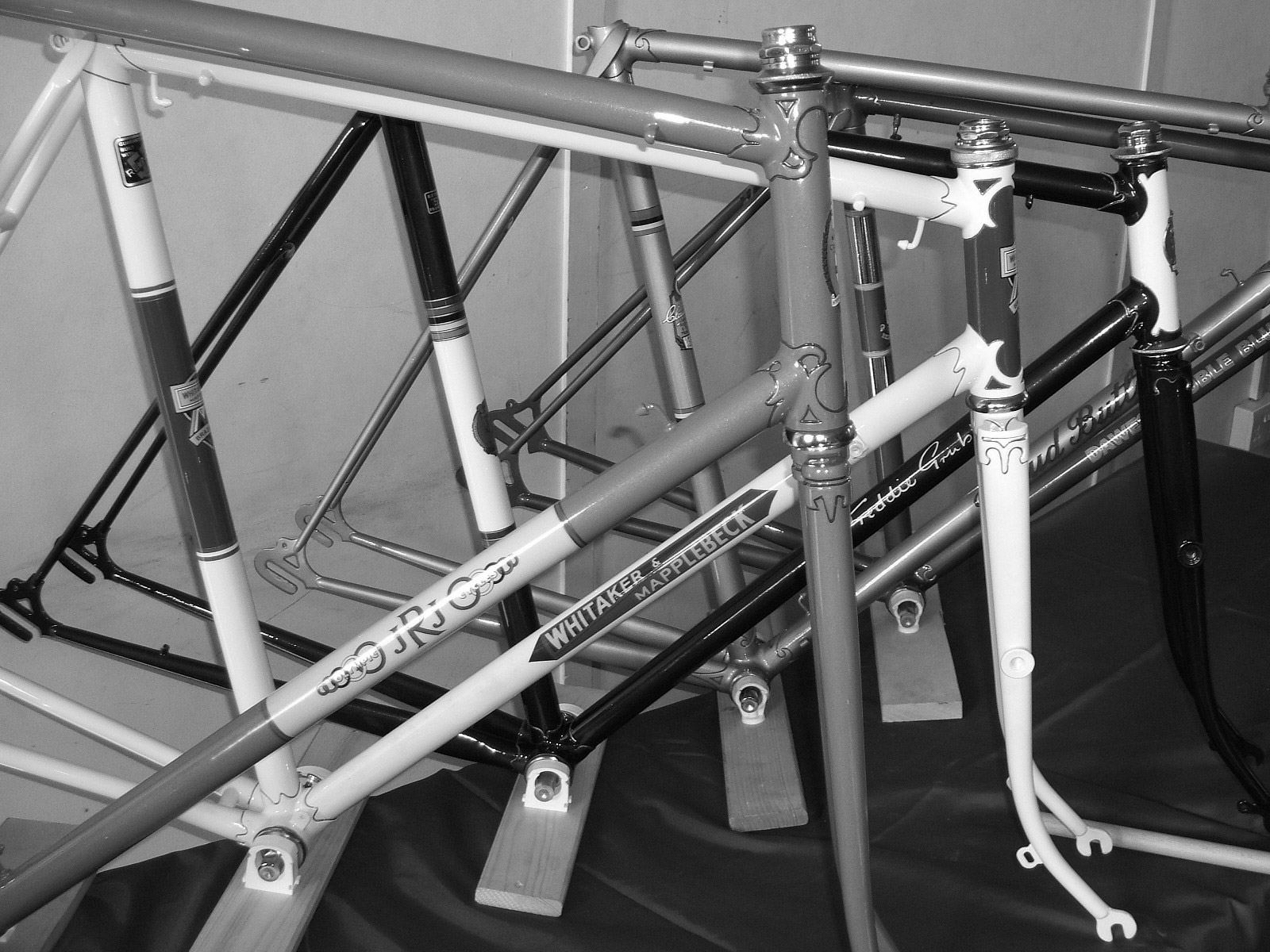Brooks B17 saddle
Posted: Tuesday 21st July 2020
For a bicycle part to be still in production for probably nearly 110 years is really quite unique – only matched by another saddle from the Brooks range the B90. And from the 1920s right through to the 1970s it was the saddle of choice for most serious riders across the world including pro riders from France, Netherlands and Italy who could have chosen a saddle made in their own country. Hard riding tourists will still often choose a B17 for the sheer comfort it offers over many miles. Leather saddles mould to fit the rider’s shape and the polished leather has just the right amount of friction for the rider to sit on.
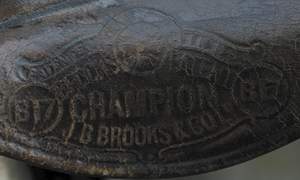
The Brooks B17 saddle was originally launched sometime in the mid 1890s – it’s not been possible to establish the exact year. Initially, the B17 was not the top racing model in Brooks lineup. The B9, B10 and B11 were the top racing saddles. The B17s of this period were wider than today’s ones – the width varied a little from year to year but typically 8 1/2in wide compared to 6 3/4in for a modern Standard. In 1905 Brooks introduced a new version of the B17, the B17 Champion with dimensions of 11 x 6 1/2in almost identical to the modern Standard model.
In the 1920s a new B17 model was introduced, the Narrow which was just 6in wide. It had made a brief appearance in the 1910 catalogue but it does not appear to become established in the range before the 1920s. Another much more specialised saddle, the Sprinter (4 3/8in wide) was introduced in the late 1920s; as the name implies this was intended for short distance track events.
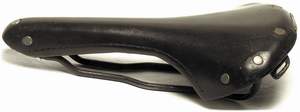
A further two new models were introduced for 1936 – the Flyer and the Swallow (left). The Flyer was intermediate in width (5 1/4in) between the Sprinter and Narrow. The Swallow was the same width as the Narrow but had cutaway sides in order it was claimed to allow for more rider leg movement. A year later the B17 Flyweight Champion was introduced. Earlier in the 30s Brooks had made several racing saddles with aluminium sideplates in order to effect a weight saving. The Flyweight used conventional steel wires but had an aluminium cantleplate and the leather significantly trimmed, it was the same width as a Flyer and 5ozs lighter. A year later it was renamed the Flyweight Flyer and a Flyweight version of the Narrow was introduced.
World War II saw a drastic reduction in the range to the basic models and it was not until 1949 that a wider range of models was offered. A new range of lightweight models with aluminium cantleplates and stainless steel rails was launched. On the standard range of B17 saddles chrome plated rails were also offered as an option for the first time. They were numbered differently – B27 (Standard), B37 (Narrow), B47 (Sprinter) and B57 (Swallow). In late 1952 (though previously available on the continent) a new B17 model, the B17F was introduced – this was essentially a modified version of the Narrow with keyhole slots in the top and a more rounded cantleplate with the leather trimmed away. This was similar to how many riders were already modifying their saddles. This model later evolved into the Special before disappearing from the catalogues just before the announcement of the B17 Competition at the November 1954 London Cycle Show. The Competition was slightly wider initially than the Narrow (6 ¼in) and was intended strictly for the racing market.
In 1959 a special version, the B17 Competition Campagnolo was introduced with longer rails set closer together offering more back and forth adjustment in conjunction with a special seatpin from Campagnolo. This saddle was not a great success – some riders complained that it was not stiff enough laterally. This was the last introduction to use the name B17. But the Professional (introduced in 1963) and the Pro Select were based on the B17 Competition but with larger rivets. The Sprinter, Flyer and Swallow were all dropped in the late 1960s but in the 1980s Brooks reintroduced new versions of the B17 Swallow – these were not of the same quality as the originals. But this year they relaunched a limited edition of the Swallow made in virtually the same way as the original. The B17 Standard and Narrow still remain in production. And some B17 Standards have recently been offered with titanium rails.
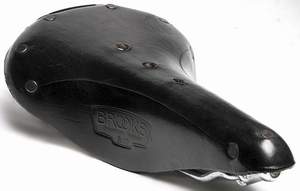
Detail Changes
The main design of the Brooks badge embossed on the side flaps has just had three major changes though of course there have been many little detail modifications. In the early days there was a large embossing with intricate top half, the model name in the middle and J B Brooks & Co at the bottom. By the early 1920s a simple oval badge with Brooks in the centre and the model name around the bottom edge of the oval was used. In 1954/5 the badge was changed to a parallelogram shape with Brooks in the centre and the model name at the bottom. (Post 1954/55 Brooks B17 Narrow)
The badges on the rear have changed too – early examples had a lovely fretted badge and in the 1960s there was even a period when no rear badge was fitted.
The other main change has been to the saddlebag loops which almost all B17s (barring most Sprinters, the B17F (Special) and Competition) have been fitted with. Until the late 1930s metal loops were fitted within the leather at the rear of the saddle. On the Flyweight models a wire loop was added where the saddle rails met the cantleplate – this was soon adopted on the other models. By 1948 the cantleplate was extended and saddle bag loops built into the extensions.
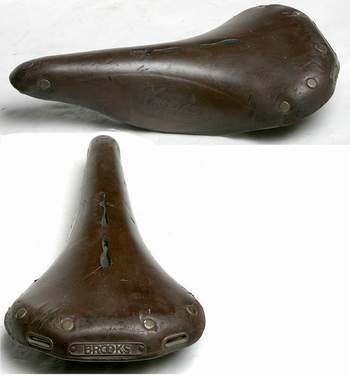
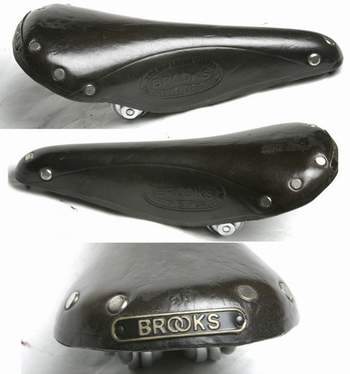
Cheaper Versions of B17 range
There have been numerous cheaper models – the best known of which are the B15 which used leather which was supposedly of slightly less good quality. In the post-war years Brooks also marketed similar saddles under the Lycett, Wrights and Leatheries names – these were all cheaper quality saddles.
Posted: Tuesday 21st July 2020
This article appears in the following categories.
Upcoming Events
Whether you are looking for a gentle social meet up, or a 100-mile ride browse the community’s upcoming events and plan your next weekend outing.
